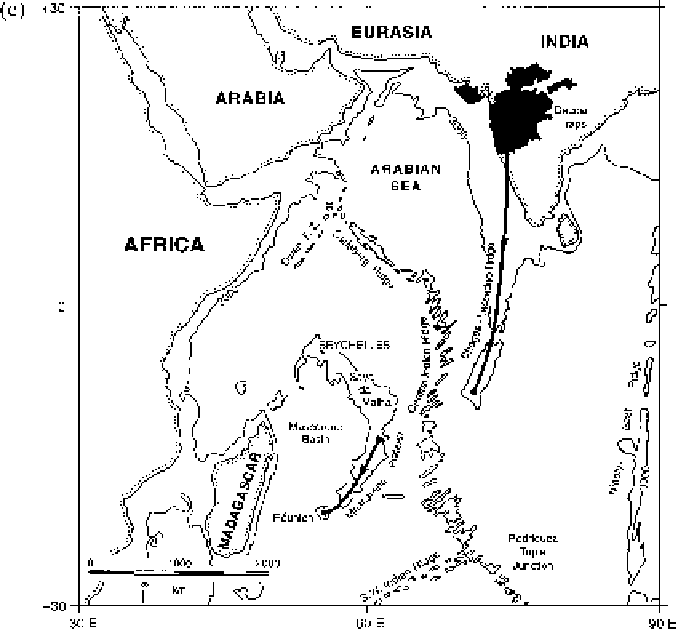Geoscience Reference
In-Depth Information
Figure 3.21.
(c) The
Mascarene Plateau and
the Chagos-Maldive-
Laccadive Ridge mark the
track of the R eunion
hotspot from the initial
massive outpouring of
basalt in the Deccan Traps
to its present location
beneath R eunion Island.
(After White, R. and
McKenzie, D. 'Magmatism
at rift zones: the
generation of volcanic
continental margins and
flood basalts,
J. Geophys.
Res.
,
94
, 7685-729.
Copyright 1989 American
Geophysical Union.
Reproduced by
permission of American
Geophysical Union.)
Section 10.2.3 for details of continent-continent collisions). It is apparent in
Fig. 3.20 that a second major change of spreading direction must have occurred
on the Southeast Indian Ridge at this time. Older anomalies strike approximately
east-west, whereas the younger anomalies strike northwest-southeast. Therefore,
prior to the time of anomaly 19, the Southeast Indian Ridge was striking east-west
and the east-west magnetic anomalies in the Arabian Sea, south of India and in
the Bay of Bengal were all formed by the same ridge. Almost all the lineations
formed on the north side of that section of the ridge which lay to the east of the
Ninety-East Ridge (a hotspot trace) as well as the extinct ridge itself have been
subducted by the Java Trench, the only subduction zone in the Indian Ocean. The
ridge between Australia and Antarctica continued to spread very slowly. The fate
of the ridge between Australia and India is not clear. It is possible that India and
Australia then lay on the same plate. There has been only slight motion between
India and Australia since about the time of anomaly 13. Very broad 'diffuse' plate
boundaries subdivide the Indian plate into the Indian, Australian and Capricorn
plates, with the Capricorn plate lying to the east of the Central Indian Ridge
between 10
◦
S and 30
◦
S and extending east to
∼
80
◦
E.

